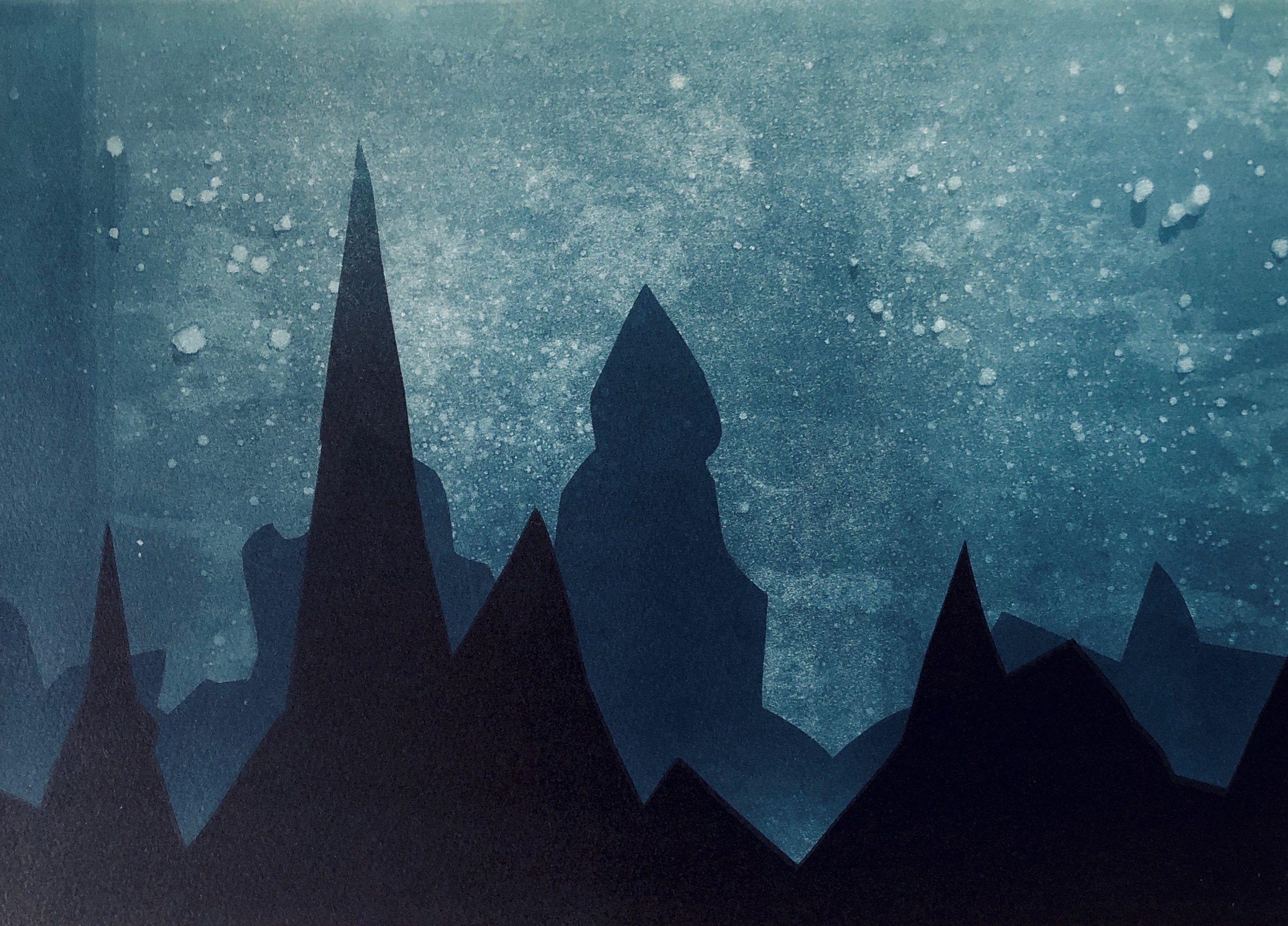
Infinite Terrain
— Helen Hillyard, Curator, Dulwich Picture Gallery
It was a residency in Iceland in 2021, which laid the groundwork for a shift in Hailstone's practice. This period provided the opportunity to make work in an unfamiliar context and explore a wholly different type of nature but, beyond this, it offered her the possibility to see landscape in a new way.
.
Hailstone translated what she discovered not into literal reproductions of Iceland's rock-hewn landscape, but instead developed a more ambiguous representation of the land, drawn from what it felt like to physically experience the environment and to stand within it. Hailstone's attention to the feeling of the environment, and the enduring power of nature could be interpreted as connecting her to the concept of the sublime. Yet the works Hailstone creates offer a quieter, more internalised, meditation on the landscape, one that conceives this relationship as a symbiosis rather than a fight to the death. Her's is a landscape connected to, but not bound by, the conventions established by Gainsborough and Turner. Instead, foregrounding memory and the layers of history found within a place. The resulting prints are dreamscapes, images which occupy the space between the natural and the otherworldly.
In producing these works, her process has incorporated a greater element of chance. 'Drawing with scissors' in the manner of Matisse, she assembles collages as the starting point for her prints. She is able to find freedom in the process of cutting and placement. But this method also establishes a state of disconnect, allowing her to access the landscape in a different manner. Much like a dream, there is a gap between the memory and the waking reality.
One motif that often appears in her work is the cave. In the monotype Untitled (Vision), it opens like a yawning mouth only to reveal a starry sky. But in Hailstone's understated style, it is a luminous and magical other-place rather than an inescapable abyss. The balance that exists in this work, between weight and expansiveness, the solid and the ephemeral, connects many of Hailstone's recent pieces, and the distillation of an image into core elements is an idea that she credits to her late mentor, the master printmaker Stanley Jones. In its abstracted parts, she considered not just shape, line and colour but the paper too - and its colour - as the underlying foundation for the work.

